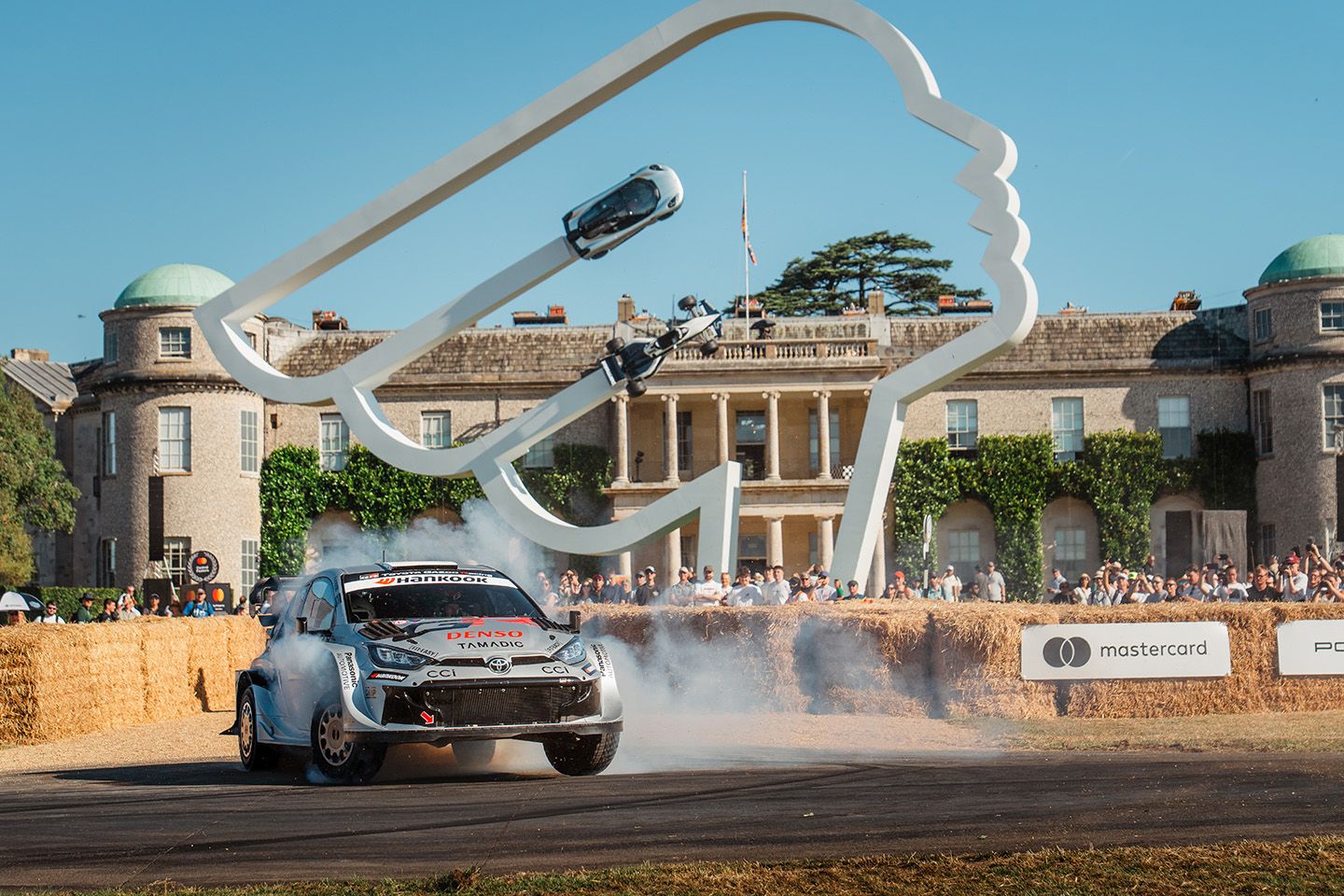
Most car journalists, myself included, believe we’d be semi-decent racing drivers given the time and money to do it properly. Sounds boastful, I know, but racing cars are inherently easy to drive, the tricky bit is finding that extra tenth or two that separates the good from the merely competent. Clearly, there’s no way I could jump into a Formula 1 car or a Le Mans prototype and be as quick as the pros, or even an amateur – but could I put a few laps in without completely embarrassing myself? I’d certainly hope so.
Yep, I’ve got the racing driver ego nailed to T, but I know my limits. Put me on a motorbike, for instance, and there’s no way I’d be going any quicker than walking pace. Quite how the MotoGP or TT lot can switch off the part of their brain that says ‘this is a bit dangerous, isn’t it? Let’s slow down’ is beyond comprehension, and is what makes bike racing so utterly captivating. The other ‘no way I could do that’ sport is rallying, for similar reasons. Sure, the cars are a lot safer these days and they’re not entering each stage completely blind, but with the competition being the closest it’s been in years, the margin for error has been completely eroded.
Then there are the cars themselves. Back in 2017, new rules were introduced to drastically increase the pace and drama of the rally machines, effectively initiating a modern-day Group B era. The cars grew wider and sprouted intricate winglets and fairings to keep them planted at the ridiculous speeds they’d be driven through forests, between snowbanks and alongside cliff edges. Then, in 2022, another rules reshuffle all but abandoned their road-car origins in the name of improving safety. So while today’s machines look like a Ford Puma, Hyundai i20 N or Toyota GR Yaris, they’re actually spaceframe silhouettes that just about resemble the road cars they’re named after – just like the Lancia Delta S4, Metro R64 and Peugeot 205 T16.
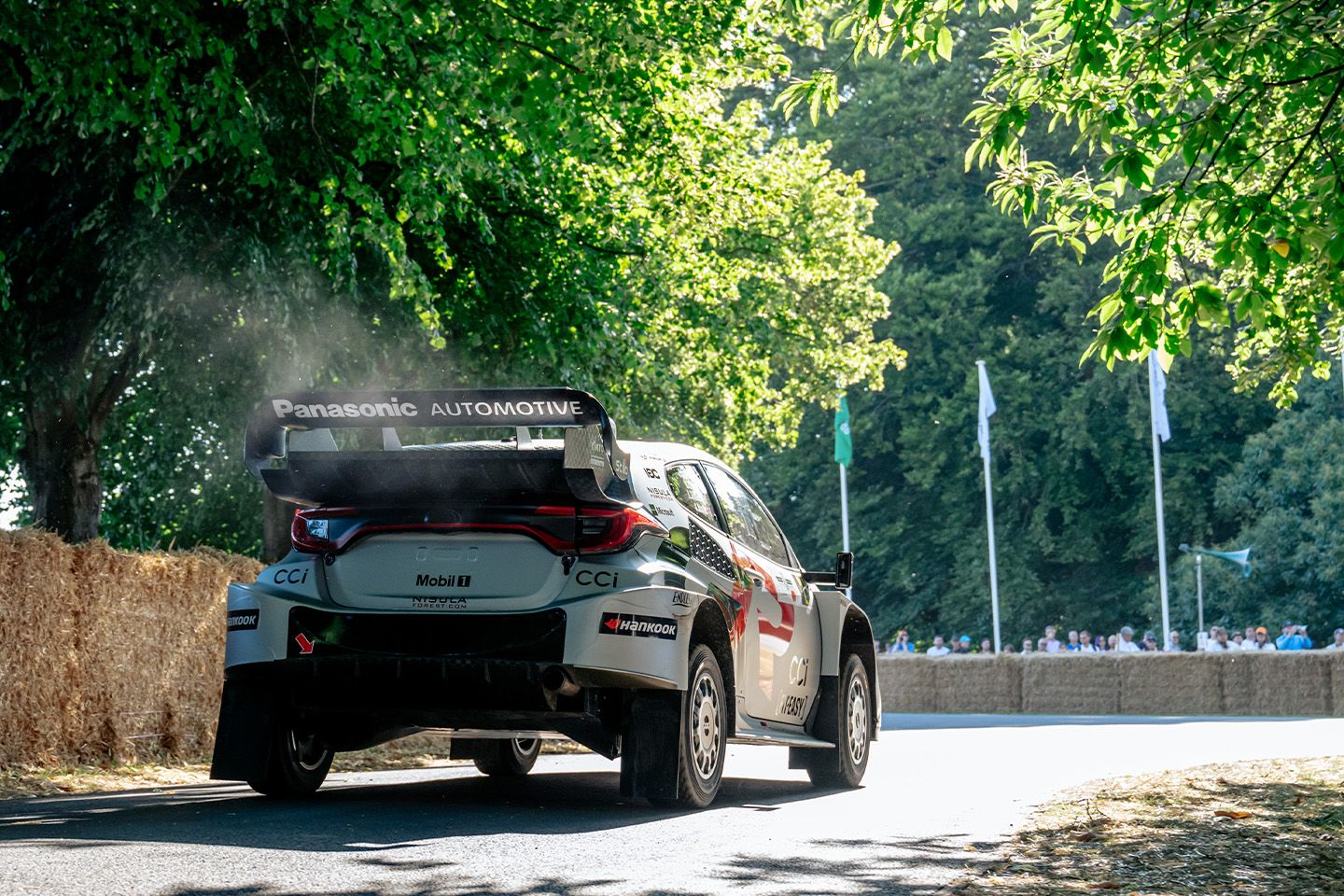
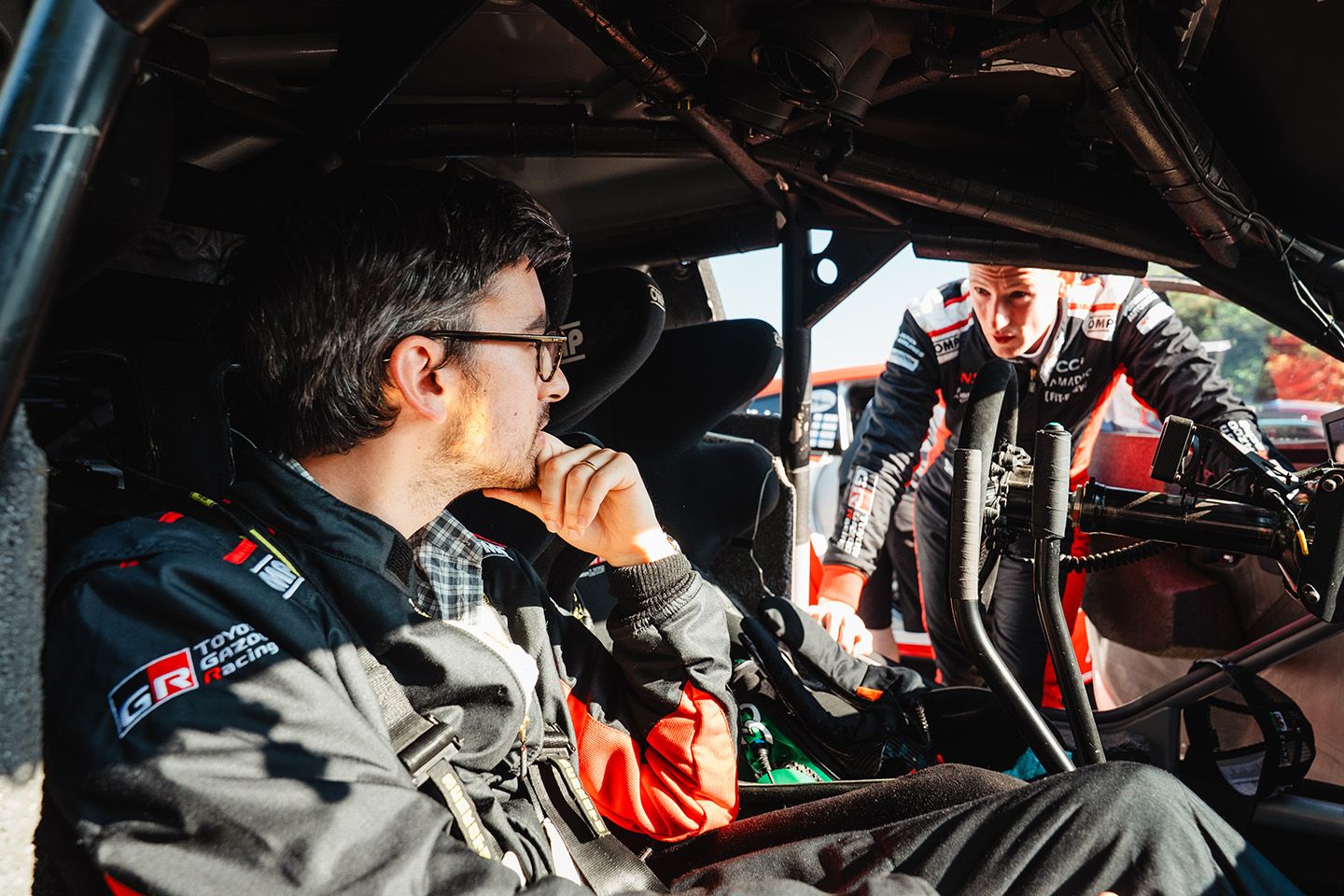
The shakeups have worked, too, at least in terms of mixing up the competition. Sébastien Ogier, Ott Tänak, Kalle Rovanperä and Thierry Neuville have all bagged World Rally Championship titles in the last seven seasons, with Ford, Toyota and Hyundai sharing turns in the limelight. One driver, however, has finished runner-up in four of the last five seasons, getting within inches of the 2020 title before being cruelly denied by a treacherously icy corner in the Rally Monza finale. Toyota’s Elfyn Evans has 11 rally wins to his name and currently leads the 2025 WRC standings, but with Ogier, Rovanperä and Tänak breathing down his neck at the halfway point, it’s hardly his to lose. A misjudged corner, stray rock or even just running first on the road could reshuffle the whole order within a weekend.
So the chance to ride shotgun with him up Goodwood hill and around the rally stage in the full-fat WRC car was obviously too good to turn down, though I thought it wise to leave the championship chat to the proper motorsport journalists and instead use the time to get to know Britain’s championship hopeful. Or so I’d thought. Come the morning of the run, Toyota engineers were huddled around the silver-livered Rally1 machine, frantically trying to rectify an issue that they weren’t at liberty to divulge. Fortunately, the green light was given, I was bolted in the second seat, normally occupied by co-driver Scott Martin, and told that the radio between me and Elfyn wasn’t working. Great.
Elfyn jumps in and immediately dumps his crash lid at my feet. “Sorry, would you mind looking after this for me?” So I spend the short trip between the Toyota tent and paddock gazing at the green, white and black crash helmet adorned with the Welsh red dragon of the championship leader. Not that I’m able to do much else, because Elfyn’s far too busy revving the rally-bred, four-cylinder (not the production three-pot) to its limits for the crowds that had gathered. “Is this the hybrid car?”, I shout. Elfyn proceeds to tell me that it was, but is now used as a marketing car so has had its battery removed, just like the current iteration of WRC machine.
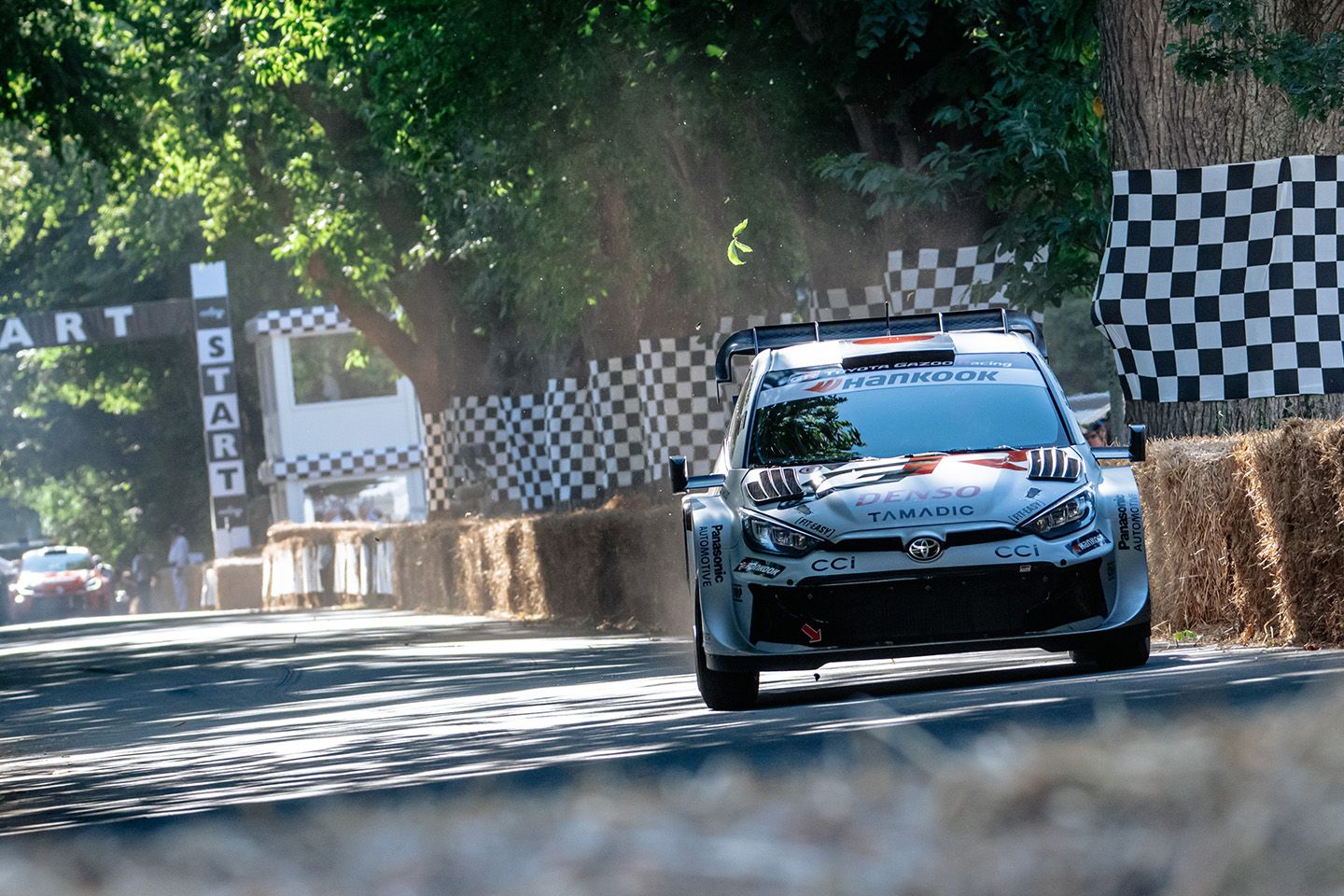
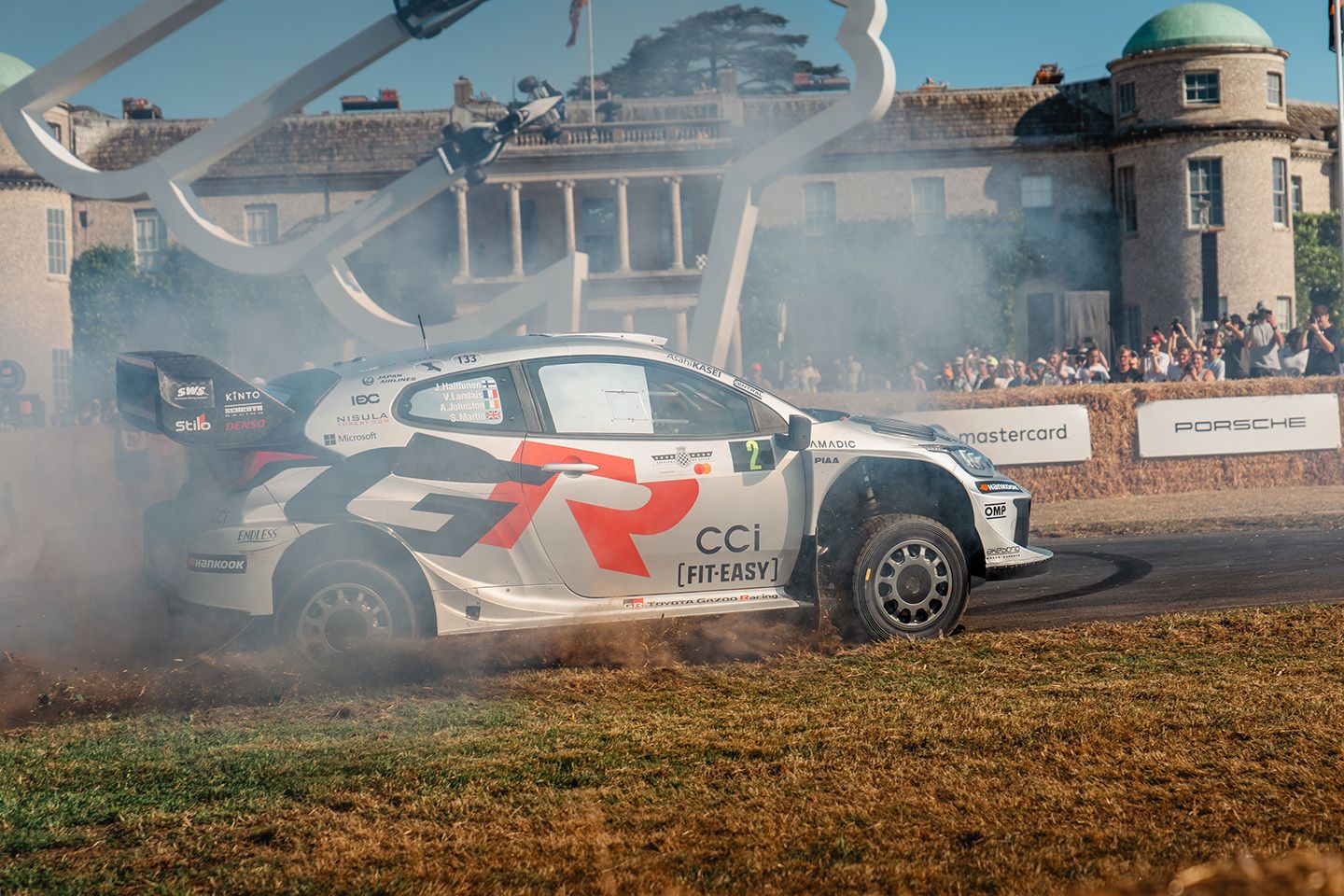
We get to the paddock and Elfyn jumps out for a quick chat with teammate Sami Pajari. I remain locked in place like a toddler in a car seat, unable to move and feeling even more useless than I normally do. A couple of mins later, Elfyn jumps back in, notices the cable for the helmet’s mic is the wrong way round and swaps the leads over. Now in contact, I ask him how the current cars compare to the 2017-spec Yarises, which sat far closer to their production counterparts. To my surprise, he says he’d take the older cars over the current ones as they were lighter and more agile, while admitting he never really gelled with the hybrids (and that’s reflected by a couple of seasons where he was a little off the pace). They’re better without batteries, he says, as they are this year, but they’re still just shy 1,200kg, and can feel a little lazy to turn in. Not what you want when dancing from hairpin to hairpin in Rally Monte.
The signal is given to head to the start line and the engine roars into life. It’s only now that I notice the switches on the co-driver’s kick plate, one of which operates the whispers and another for the electric cutoff. Keeping my feet firmly planted in the centre of the plate should be easy, but as we head down the hill to the start line, Elfyn’s pinning the throttle, which, in full gravel spec, pitches the nose up, before hitting the brakes and bringing the nose down towards the tarmac. At the same time, he’s frantically weaving left and right to generate some tyre heat. If that sounds like a recipe for car sickness, it is. Good thing I don’t suffer from motion sickness and consider myself an easy passenger, but the gyroscopic motion of constant acceleration, braking and weaving was immensely uncomfortable. Fortunately, our run was so early I’d yet to eat breakfast, otherwise I’d have likely made a right mess of the inside of our championship hopeful’s million-pound rally car.
A quick handbrake turn at the spot where you’re not allowed to do it anymore (the bit where everyone bins it) and we’re waiting for our turn up the hill. As I’m collecting myself, I ask Elfyn about what the path into the WRC looks like. Circuit racing typically involves years of karting before progressing through the single-seater, GT or prototype ladders. But rallying? “I always tell people that to go rallying, you have to really want to go rallying”, says Elfyn, with a smile on his face. “Some people just want to get in for the lifestyle”, he adds. But the ladder is far from glamorous, explaining how he competed in the odd national rally before entering the Fiesta Sport Trophy (racing a rally-prepped version an ST similar to mine), which he won in 2011. That earned him a ticket into the WRC Academy in 2012 and factory outings in the WRC a year later, all while supporting his family’s business back home in Wales. His first stage win came in the monstrous Fiesta RS WRC in 2017, before moving to his current home at Toyota in 2020.
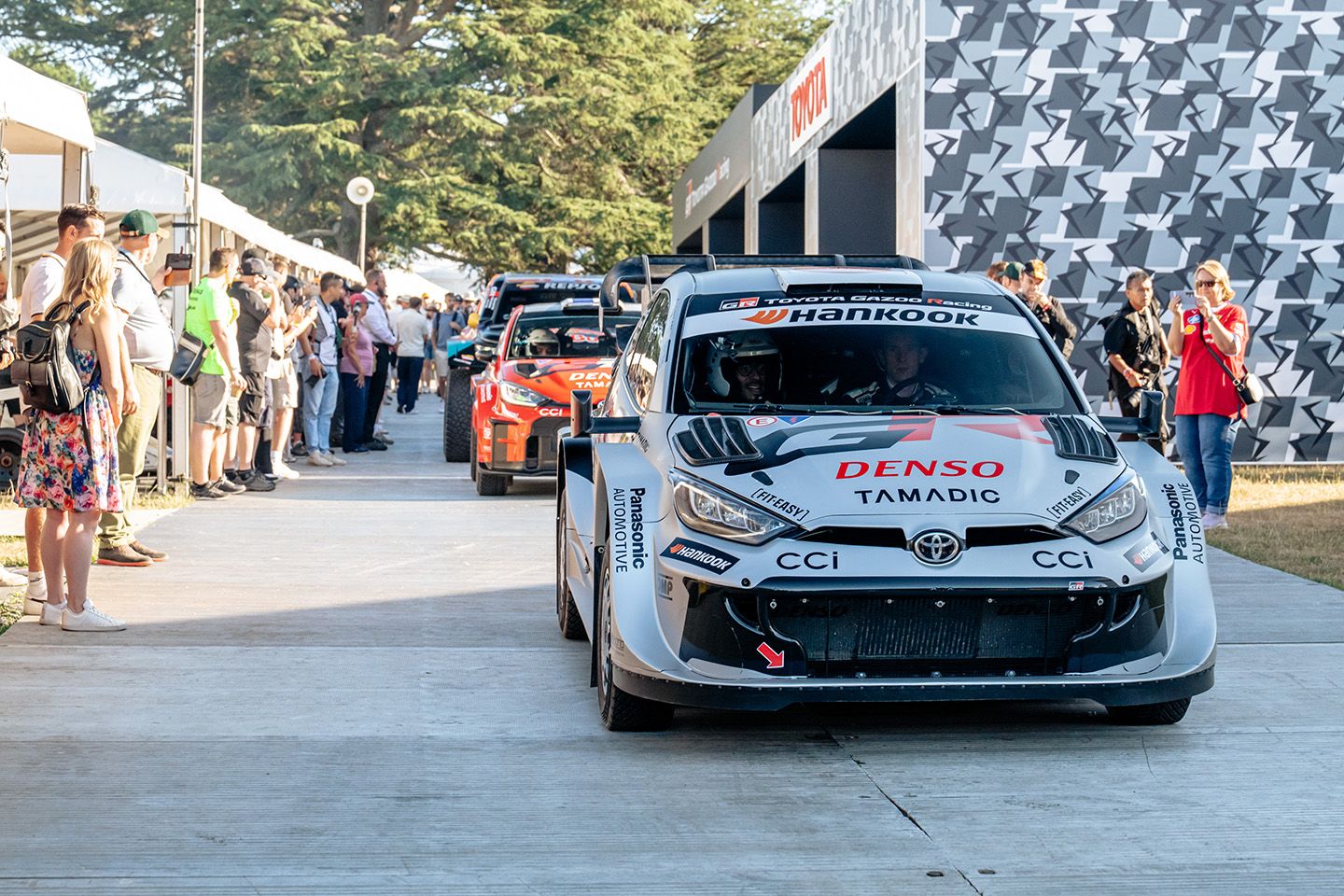
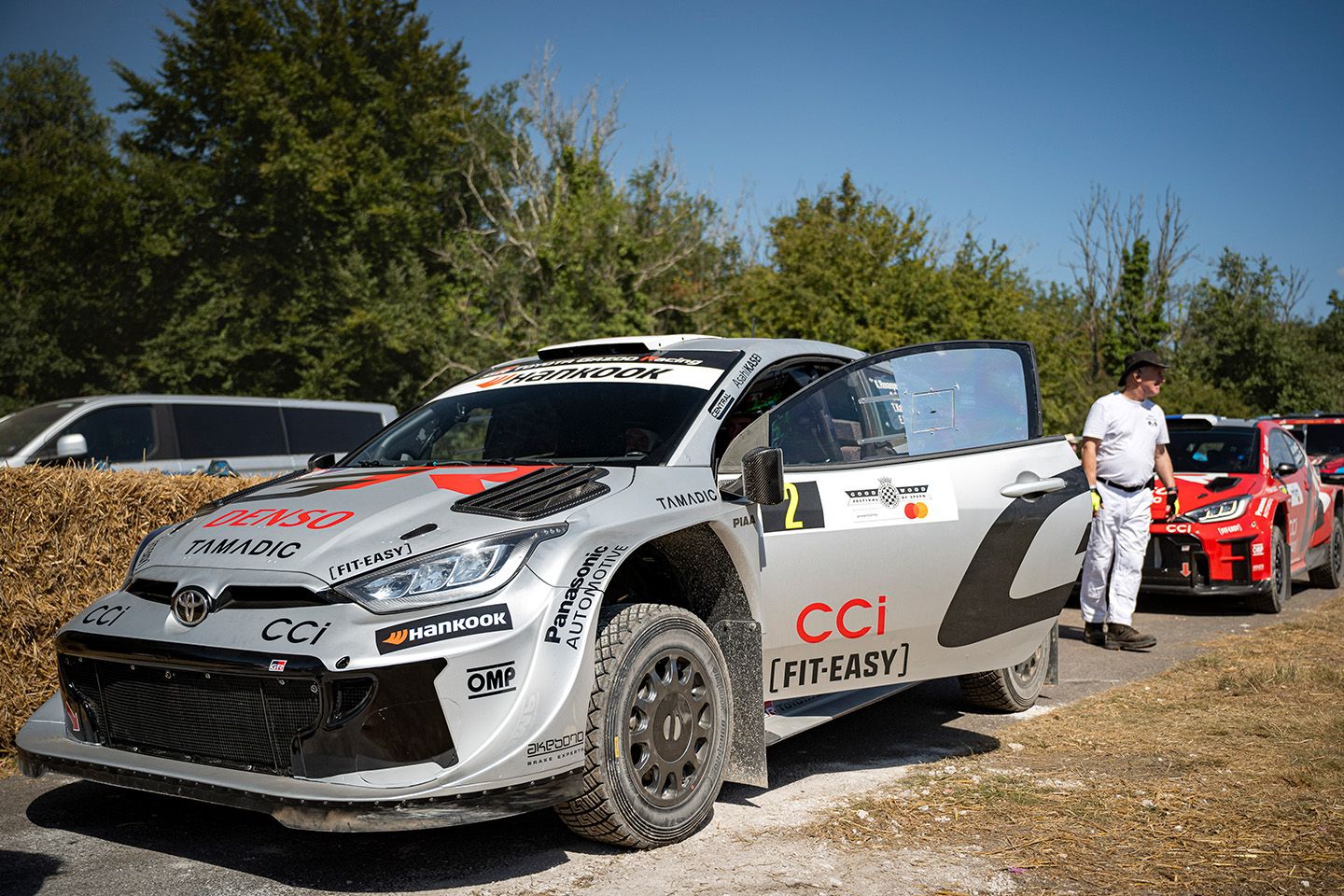
Our chat is swiftly interrupted by the Rally2 GR Yaris heading off on its run up the hill. As we edge closer to the start line, Elfyn twists a dial on the steering wheel, ‘race 1’ appears on his small LED dash and the engine revs jump immediately to a higher idle. We’re ready for the start. The light turns green, Elfyn ups the revs for a rally start, and away we go. The nose rises once again, pinning me to the back of my seat. The acceleration is astonishing as Elfyn pulls at the sequential shifter to the right of the steering wheel for another gear. Then another. And another.
Turn one, a relatively tight right-hander that opens into a small straight, arrives and he gets the nose in early, shifting the weight to the left-hand side while taking a huge chunk out of the inside turn. We’re then in full view of Goodwood House, which can only mean one thing: donuts. Elfyn yanks the handbrake like a shotgun trigger, turning the car 180 degrees before opening the throttle up. The cabin fills with tyre smoke and the smell of burning rubber, and I make the mistake of looking out the side window, which instantly throws you off balance. Note to self: look straight ahead for donuts. We then do another 720 (or maybe 1440?) further up the hill, which Elfyn effortlessly styles out to complete the run. The rest of the climb doesn’t feel quite as rapid as the start, but it’s rare for rally cars to be in an environment as open or straight as Goodwood hill.
Besides, we were set up for the forest rally stage, which was next on the agenda. After crossing the line, Elfyn subjected me to yet more donuts for the crowd at the top of the hill, and then exited stage right for the rally paddock. A quick stop at the service area, where Toyota World Rally Team boss Jari-Matti Latvala was gearing up for a run in his GR-liveried Celica ST185 WRC car, and we were back out for stage 2. I ask Elfyn if he’s going to give it the beans now that he’s woken up a bit. He laughs, but concedes he’s not interested in setting times. “It’s a technical stage with a very chalky surface”, he says. “It’s almost impossible in the wet, but even in the dry it’s incredibly slippery.”
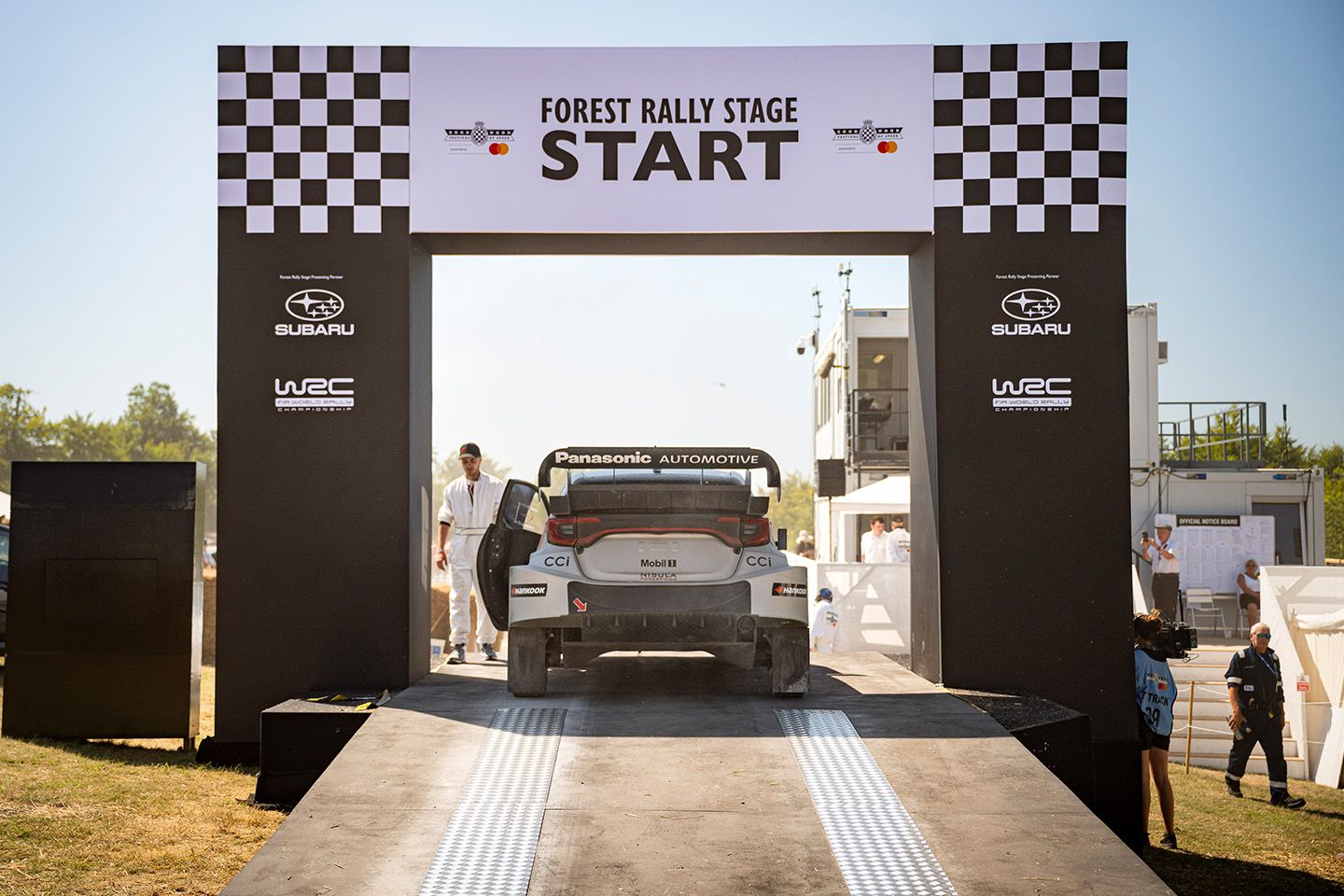
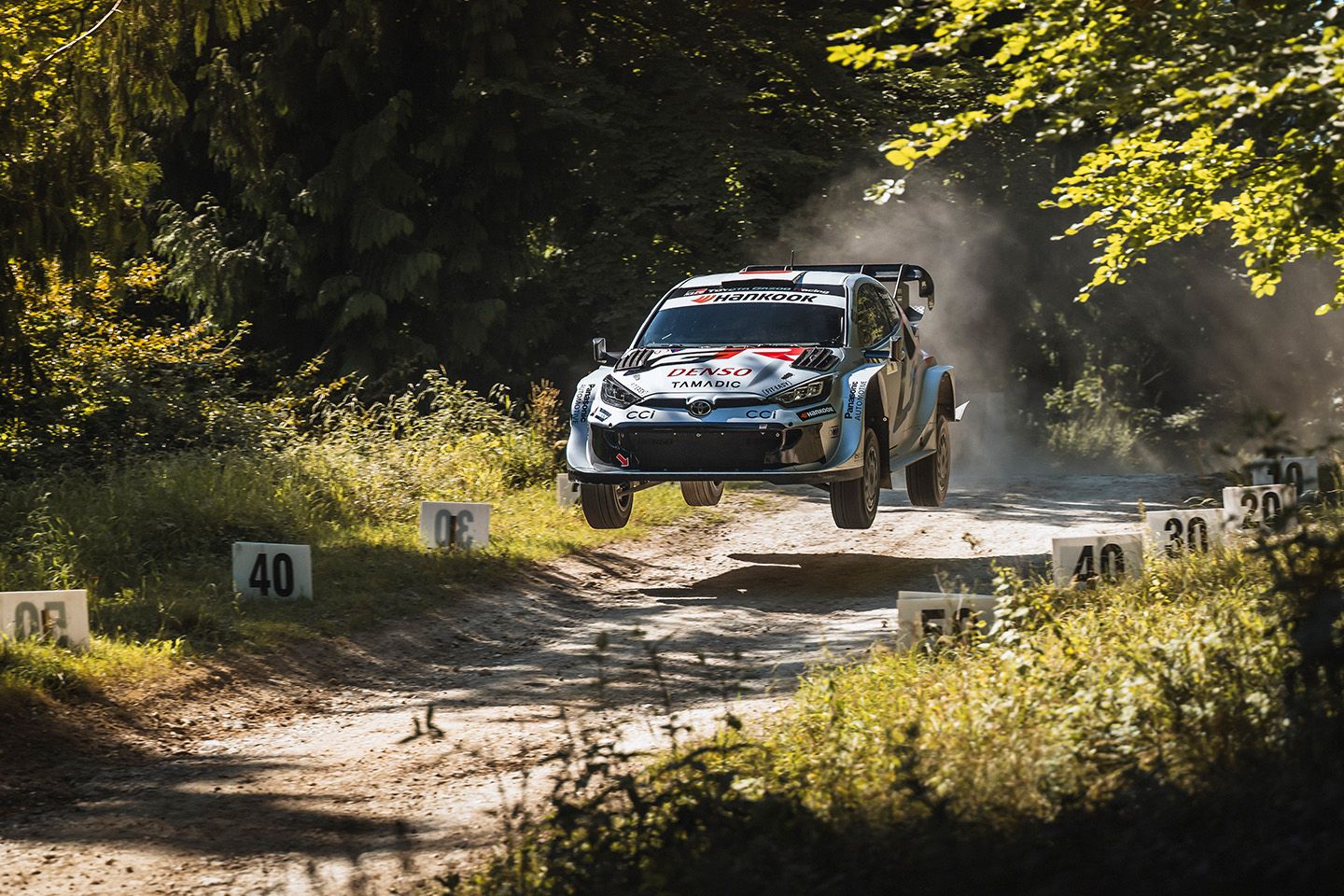
You could’ve fooled me. We launch off the line and immediately take a blind, sharp left and hurtle towards the depths of the forest stage. He wasn’t kidding when he said it was technical, with high dirt verges and endless sharp turns, all aiming to catch the very best out. Elfyn, meanwhile, isn’t just clipping apexes: he’s devouring them, vaulting over the dirt banks as if they weren’t there. Here, the Rally1 Yaris feels insanely fast, quicker than anything I’ve experienced (and I’d been up the hill in the 1,079hp Aston Martin Valhalla the day before), almost to the point where it felt too big for the course. How Elfyn made it out the other end, with the commitment he was carrying into each corner, just shows how hugely talented rally drivers are.
And tough, too. You’d think with all that suspension travel that the ‘Yaris’ glides through the stage like Aladdin’s magic carpet. Nope. It’s utterly brutal, shocks echoing through the body and seat as we clatter over rocks and potholes. Nothing, however, could prepare me for the jump towards the end of the stage. It doesn’t look all that bad on video, but in the cockpit it is positively violent. All your organs begin to float around in your body as you take off, engine screaming at maximum revs all the while, which is what I imagine astronauts feel rocketing into space for the first time. Then, on re-entry, the car slams back onto the ground, the force of which is absorbed by your backside and spine. It’s deeply unpleasant, but at the same time of course, epic.
Adrenalin pumping, we cross the line and trundle our way back to the service area. I shake Elfyn’s hand and thank him for one heck of a ride, before letting another journalist have their turn in the hot seat. Hats off to Elfyn’s co-driver Scott, who has to endure four days worth of punishment 14 times a year, with some stages taking up to 30 minutes to complete, all while reading pace notes. Elfyn, meanwhile, is obviously a proper talent, and a lovely chap at that, as is the case with so many rally people. There’s none of the gamesmanship you find in, say, Formula 1, and none of the egos, either. I don’t get the impression he’s in it for glory, and certainly not for fame; he’s in it to be the best at one of the world’s most challenging sports. And for that, I am in awe, just as I have been since watching Richard Burns win Britain’s last WRC title back in 2001. Here’s hoping that Elfyn will join the list come the end of Rally Saudi Arabia in late November. Rallying, you’ve just got to love it.

